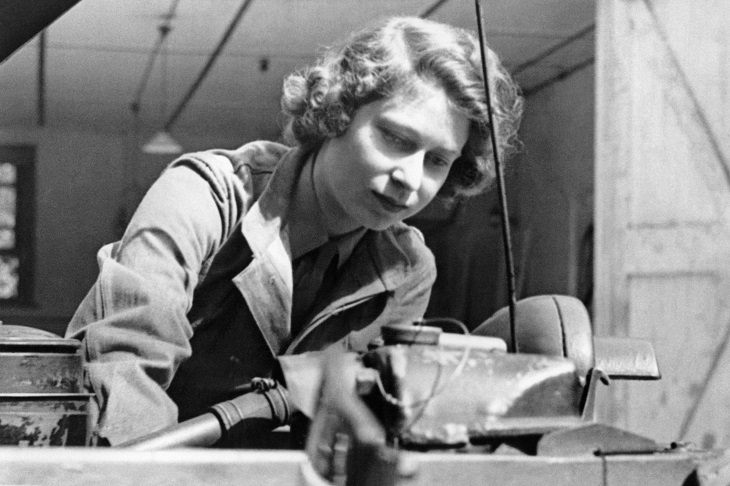The public outpouring of emotion and deep sorrow being expressed around the world following the death of Queen Elizabeth II would, in all probability, have embarrassed Her Majesty.
We can hear her saying to those close to her, ‘What’s all the fuss about?’ She would quite likely have thought it all ‘just a bit much’.
The Queen, like her only daughter Anne, was not one for public displays of emotion and nor was she given to ‘playing to the cameras’ which shadowed her every public appearance, not only for her seventy years as Sovereign, but her entire life.
The cameras followed her – not the other way round.
Her truly remarkable life has been micro-documented in books, film, cameo appearances, documentaries, newsprint, magazines, social media, and perhaps most importantly, in sound.
The early archival recordings of the Queen’s voice are startling and fascinating to hear. As the movie The King’s Speech so poignantly highlighted – a good speaking voice was a significant advantage for those in public life. Elizabeth had such a voice.
At 21, when most of us might struggle to deliver a coherent speech in the company of family and friends – Elizabeth found the self-assured wisdom to say these words to a global audience:
‘My whole life, be it long or short, will be devoted to your service, and to that of the great imperial family to which we all belong.’
Then, as so recently, the Queen’s words were crisp, clear, and to the point. While humour certainly featured in the Queen’s speeches from to time – ambiguity did not. People to whom she spoke knew exactly what she was saying.
Just seven years after the end of the second world war, the Coronation of Her Majesty took place on June 2, 1953 at Westminster Abbey.
Elizabeth was 25 when she acceded the throne upon the early death of her father George VI on February 6, 1952. She was proclaimed Queen by her respective Privy and Executive Councils shortly afterwards. Astonishingly, Elizabeth II was Queen of 32 sovereign states during her long life and served as Monarch of 15 of them, including Australia, at the time of her death just a few days ago.
The vast number of archival records about the Queen’s life reveal a no-nonsense, practical mother, grandmother, and great-grandmother. She took on the role as Queen while also being mother of two children with two more yet to appear. She dressed simply and pragmatically, she was fun-loving yet appropriately restrained when ‘on duty’.
While neither arrogance nor over-bearance featured as traits of the Queen’s personality – her time with her children was obviously constrained and this is said to have troubled her at the time and later in her life.
In the fervour of life after the second world war, many women took on roles outside their family lives and many continued work they had started during the war. While the Queen came to exemplify a working mother – millions of women also had jobs. Many friends of my mother (the same age as Elizabeth II) were experienced nurses she had trained with. Others were teachers or office workers.
They were themselves fun-loving, family-centric, highly intelligent, well-informed women who – albeit from afar – admired the Queen immensely. Was it the impact of war that made them determined, resourceful, capable, spirited, and fun-loving? It certainly seemed that way to children of the 60s. The Depression of the late 20s too instilled in those born in the years following a need to work, to help keep food on the table, and to keep families together. People got on with life, as did the Queen. The realities of life required people ‘keep calm and carry on’.
Three features of the Queen’s approach to her tasks underpinned her life and endured to her last days. These are visibility, purposefulness, and duty. Despite knowing of her rapidly failing health, Elizabeth performed her constitutional role, accepting the resignation of one Prime Minister and the appointment of another just 48 hours before she died. Unfailingly, the Queen delivered on the promise she made in 1947 on her 21st birthday.
Numerous other virtues have been highlighted in recent days, but the three outlined above seem to provide the scaffolding upon which so much of the Queen’s life and work was built.
Love and devotion towards her family, the people of Britain and her realms, and an unshakeable sense of duty shaped and propelled her life to its end.
The world is better for her example and Australia is more fortunate than some may appreciate for her calm, reassuring, and determined presence over seven decades as Monarch.
Keenly appreciating this historic moment – King Charles III has the task ahead of him as does his eldest son.
Got something to add? Join the discussion and comment below.
Get 10 issues for just $10
Subscribe to The Spectator Australia today for the next 10 magazine issues, plus full online access, for just $10.


























Comments
Don't miss out
Join the conversation with other Spectator Australia readers. Subscribe to leave a comment.
SUBSCRIBEAlready a subscriber? Log in